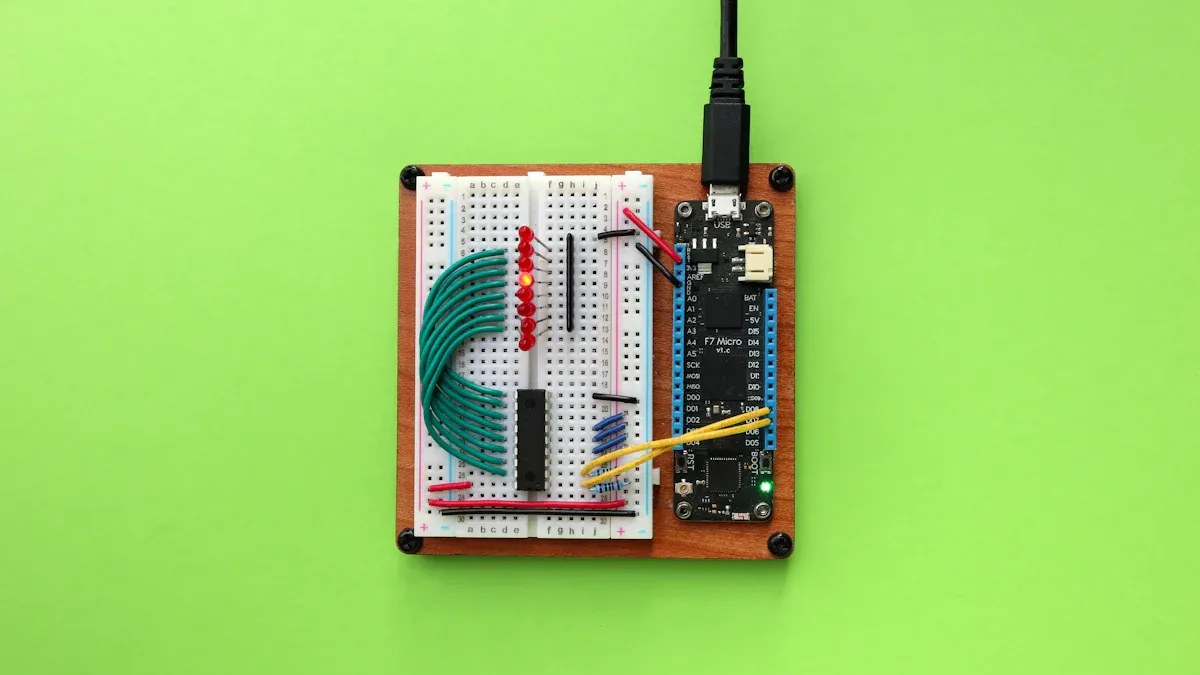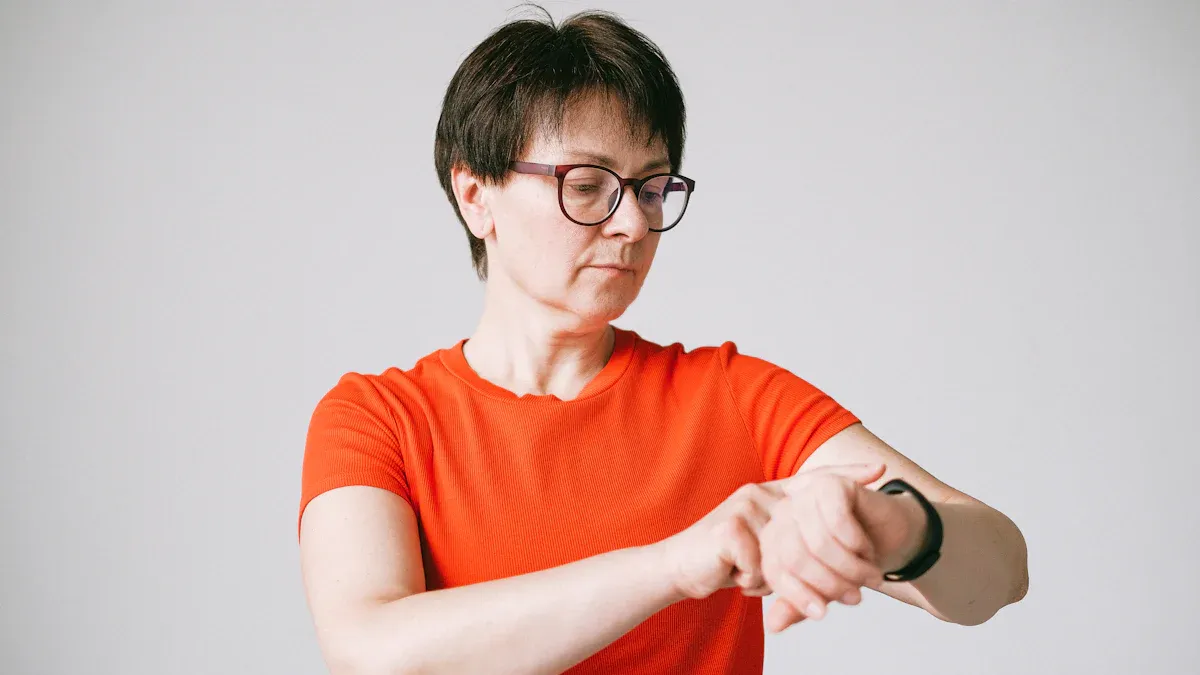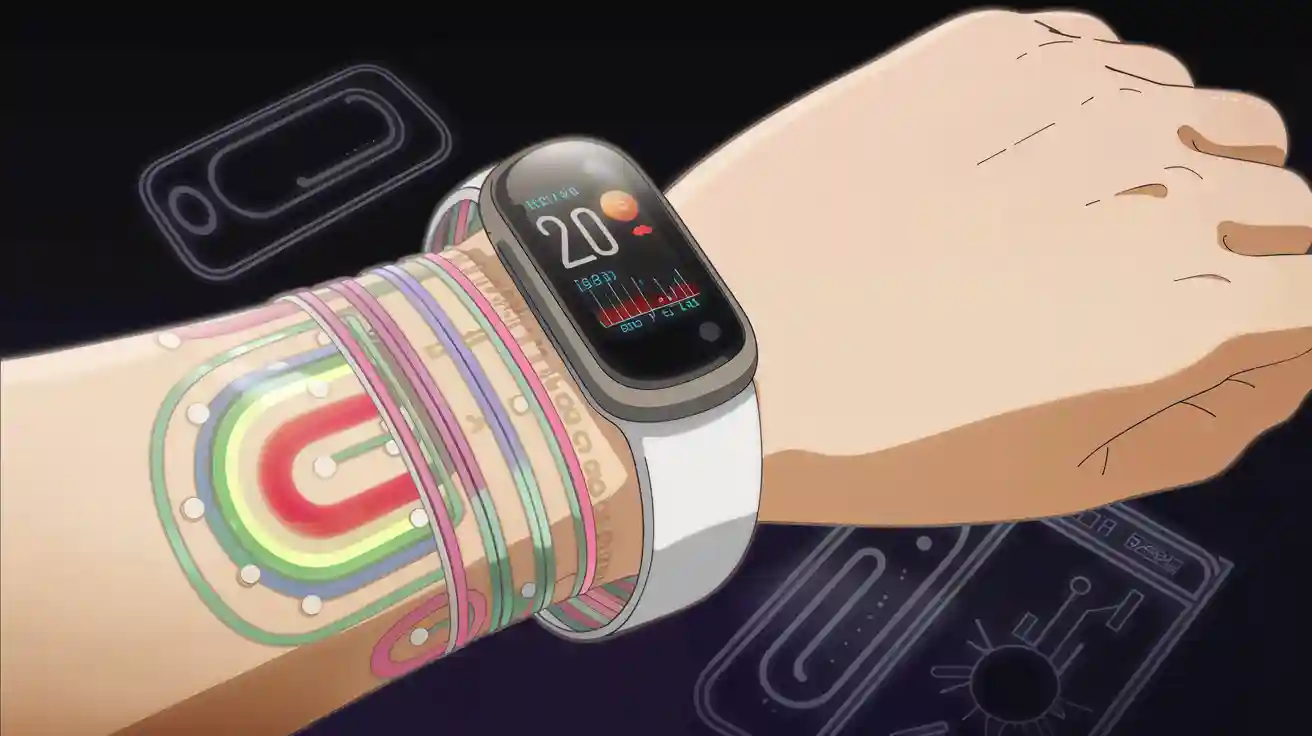You can now see stretchable circuits changing health monitoring right away. Flexible wearable sensors fit your body and move with you. Old devices were hard and did not bend. Healthcare teams use wearable sensors and flexible patches to watch your health all day. In Japan, healthcare uses stretchable circuits more than before. Sensors and wearable monitoring devices are growing fast there. The United States, China, and Europe also want more flexible wearable sensors and monitoring devices. These sensors give you comfort, let you move, and help watch your health better.
Key Takeaways
- Stretchable circuits help health devices feel soft and bend easily. They are comfortable to wear all day and do not hurt. Flexible wearable sensors check important signs like heart rate, blood pressure, and glucose right away. On-skin patches with stretchable circuits give correct and comfy health checks for a long time. These devices let you move around during your day and still keep your health data fresh. In the future, stretchable bioelectronics will help find health problems early, give care from far away, and make health checks smarter.
Stretchable Circuits in Health Monitoring

Wearable Devices
Flexible wearable sensors are common in healthcare now. These sensors are inside many wearable devices for health. Some examples are fitness trackers, smartwatches, and medical wearables. You can wear these on your wrist, arm, or in your clothes. Flexible wearable sensors use stretchable circuits that bend with your body. This makes them comfy and simple to wear all day.
Here is a table that shows how different types of wearable devices use flexible and stretchable circuits:
| Device Type | Use of Stretchable Circuits | Examples/Details |
|---|---|---|
| Fitness Trackers & Smartwatches | Flexible PCBs or rigid-flex PCBs fit the wrist shape | Lightweight, flexible bands; small PCB size |
| Medical Wearables | Flexible PCBs stick closely to skin for comfort and accuracy | Glucose monitors, ECG patches; very thin PCBs |
| Smart Clothing/Textiles | Ultra-thin flexible PCBs inside fabrics | Washable, durable smart fabrics with sensors |
| Flexible PCBs | Bend and flex without breaking, fit curved body parts | Used in heart rate monitors, chest straps |
| Rigid-Flex PCBs | Combine rigid and flexible parts for stability and fit | Smartwatches with flexible bands and rigid centers |
Flexible wearable sensors help you track steps, heart rate, and blood sugar. You get health updates right away during exercise, sleep, and daily life. Flexible wearable sensors use materials like polyimide and strong plastics. These materials let the circuits bend many times without breaking. You feel less pain, and the devices last longer.
Flexible wearable sensors also use new things like stretchable OLEDs. These sensors shine light into your skin to check blood oxygen or help heal wounds. You can wear these patches or bands for days with no problems. Flexible wearable sensors in smart clothing let you check your health while moving, running, or playing sports. You do not need wires or big devices.
You find wearable medical devices in hospitals and at home. Doctors use flexible wearable sensors to watch your health after surgery. You can wear a patch to check your heart or a band for blood pressure. These devices send data to your phone or doctor all the time. You get better care, and your doctor can help fast if something changes.
On-Skin Patches
On-skin monitoring has changed how you and your doctor check your health. Flexible wearable sensors in on-skin patches stick right to your skin. These patches use stretchable circuits to move with you. You can wear them on your chest, arm, or face.
Flexible wearable sensors in on-skin patches measure signals from your body. They can check your heart (ECG), muscles (EMG), eyes (electrooculogram), and brain (EEG). These sensors give you good and steady monitoring. You do not feel pain because the patches are thin and soft.
Researchers found that flexible wearable sensors in on-skin patches work better than old gel or dry electrodes. The stretchable circuits stay close to your skin. You get better signals and fewer mistakes from movement. Flexible wearable sensors in these patches help doctors watch for heart, seizure, or muscle problems. You can wear them for days with no skin trouble.
Flexible wearable sensors in on-skin patches use safe materials. These materials do not hurt your skin and let you wear the patch for a long time. You can shower, sleep, and move without taking off the patch. Flexible wearable sensors in these patches help with after-surgery checks, blood pressure, and healing wounds.
You see flexible wearable sensors in many new devices. Some patches use flexible OLEDs to shine light for skin therapy. Others use tiny batteries that bend and stretch. You get steady monitoring without wires or big monitors. Flexible wearable sensors in on-skin patches make health checks easy, safe, and sure for you and your doctor.
Tip: You can ask your doctor about flexible wearable sensors if you need long-term health checks. These devices can make your care more comfy and correct.
Benefits of Stretchable Circuits
Comfort and Biocompatibility
You want health checks to feel easy and safe. Flexible wearable sensors help make this happen. These sensors use soft, thin stuff that fits your skin. They move with you as you walk or run. You can wear these devices for many days without pain. The flexible shape means you do not feel hard or sharp parts. You get a gentle touch from the soft sensors. They do not bother your skin.
Biocompatibility is important for health checks over time. Flexible wearable sensors use materials that do not hurt your skin. Polyimide and soft plastics help stop rashes and allergies. You can trust these sensors to be safe every day. Flexible wearable sensors also use hydrogels and silver nanoparticles. These things keep your skin healthy and stop germs from growing. You get good health checks and better safety.
Flexible wearable sensors do not need heavy connectors or stiff boards. You feel lighter and can move more easily. The sensors stay on, even if you sweat or move a lot. You can sleep, shower, and play sports while wearing them. Flexible wearable sensors give you comfort, biocompatibility, and safety each day.
Note: You can talk to your doctor about flexible wearable sensors if you need health checks for a long time. These sensors can help you feel safe and comfortable.
Continuous Data Collection
You need health checks that work all the time, not just at the doctor’s office. Flexible wearable sensors make this simple. These sensors bend and stretch with your body. You can wear them while walking, running, or playing. The sensors keep working, even when you move a lot.
Flexible wearable sensors use smart fibers and textiles. These sensors make a network that covers your body. Each sensor node is tiny and can sense many things at once. You get real-time data about your heart rate, sweat, and movement. The sensors process data right on your body. You do not have to send everything to the cloud. This means you get fast results and early warnings if something is wrong.
Studies show flexible wearable sensors can collect correct data. Hydrogel-based sensors stick to your skin and measure both stretch and sweat. These sensors use color changes to show what is happening in your body. You can check the results on your phone. The sensors last longer because they keep moisture and fight germs. You get steady, correct data for health checks.
You can trust flexible wearable sensors for health checks all day. They work during daily life and exercise. You get updates on your heart rate, ecg, and other signs. The sensors help you and your doctor find problems early.
Enhanced Mobility
You want to move easily while using health devices. Flexible wearable sensors let you do this. The sensors bend and stretch with your body. You do not feel stuck by wires or hard parts. You can go to school, work, or play sports with no trouble.
Flexible wearable sensors from companies like Murata use special printed circuit technology. These sensors are soft, bendy, and strong. You can wear them for a long time and still feel good. The sensors help you check your heart rate and ecg all the time. You get steady data, even when you move a lot.
Flexible wearable sensors help with remote healthcare and chronic disease care. You can wear the sensors at home or outside. The sensors send data to your doctor for health checks. You get help fast if your signs change.
Here is a quick look at how flexible wearable sensors help you move:
| Feature | How It Helps You Move |
|---|---|
| Soft, flexible design | Fits your body shape |
| Lightweight materials | No heavy feeling |
| Durable under stress | Lasts through activity |
| No bulky connectors | Easy to wear anytime |
You get more freedom and better health checks with flexible wearable sensors. You can trust these devices for comfort, biocompatibility, and safety. You can live your life and still watch your health.
Real-World Wearable Applications

Heart and Brain Monitoring
You can use wearable devices to check your heart and brain. Flexible wearable sensors help you track your heart rate every day. Many monitors use flexible circuits that fit your body well. You find these sensors in ECG patches, smartwatches, and chest straps. These devices measure your heart rate and other vital signs. Flexible wearable sensors also help with brain checks. EEG patches use soft sensors to record brain signals. You can wear these patches for a long time without pain. Doctors use these devices after surgery or to watch for seizures. You get real-time data, so your healthcare team can help fast.
Glucose and Blood Pressure Tracking
Flexible wearable sensors make health checks easier for you. You can use wearable devices to check blood pressure and glucose. Stretchable circuits let you monitor your health all the time. You do not need to go to the clinic every day. Blood pressure monitors with flexible sensors give you quick results. These devices show you do not have to check blood pressure just once a day. You can use these monitors at home, work, or while exercising. Reports show that checking blood pressure all the time helps your life. You get more safety and control over your health. Glucose monitors with flexible wearable sensors help you track sugar levels. You can manage diabetes better and share data with your doctor.
Smart Bandages
Smart bandages use flexible wearable sensors to help you heal. These bandages have stretchable circuits that fit your skin. You can use smart bandages after surgery or for wounds. The sensors check moisture, temperature, and pH in your skin. You get alerts when it is time to change the bandage. Some smart bandages change color to show moisture levels. You do not have to guess when to replace them. The flexible materials make the bandages comfy and safe for your skin. You can move, shower, and sleep while wearing them. Smart bandages help after surgery by giving you and your doctor updates. You heal better and lower your risk of infection.
Tip: Ask your healthcare provider about wearable medical devices with flexible wearable sensors. These devices can help you with health checks and make your daily life better.
Stretchable Bioelectronics and the Future
Early Detection
You can use stretchable bioelectronics to find health problems early. These flexible sensors fit your body and watch for changes all day. You get health updates right away, so you see small changes fast. Flexible wearable sensors check sweat, temperature, and movement. Some new sensors use photonic annealing of inkjet printed graphene. This makes them better at finding temperature and chemicals. You get more accurate health checks. Flexible sensors help you and your doctor spot problems quickly. This can help save lives.
Remote Monitoring
You do not have to go to the clinic for every health check. Wearable devices with flexible sensors let you check your health at home or anywhere. These devices send your data to your doctor with Bluetooth or NFC. You can get help even if you are far away. Printed thin and flexible batteries power these devices. They are light and safe for your skin. You can wear them for a long time and not feel heavy. These batteries are good for the environment because they use eco-friendly materials. You get comfort, safety, and steady power for your health checks.
Next-Gen Innovations
You will see many new ideas in flexible wearable sensors soon. Researchers made a sweat-activated yarn battery that works when stretched. This battery uses elastic fibers and keeps working during hard exercise. You can put it in clothes for health checks. New sensors use liquid metal in hydrogels to make self-powered devices. These can track movement and collect energy from your body. Another big step is the soft magnetoelastic generator. It uses the giant magnetoelastic effect to make waterproof and biocompatible sensors. These flexible sensors work without extra covers and last longer. You will see these sensors in devices for heart checks, breathing, and muscle therapy.
Note: There are still some problems. You may see high costs, privacy worries, and trouble making enough devices. Companies are working to fix these by making better materials and safer ways to use your health data.
Main challenges for flexible wearable sensors and devices:
- Hard to make many devices with the same quality
- No standard rules for all devices
- Privacy risks with health data
- High price for some wearable devices
- Some devices break easily with daily use
- Trade and supply problems for parts
- Rules in some countries slow progress
- Need for more eco-friendly materials
Flexible wearable sensors and devices will keep getting better. You will have more ways to watch your health, stay safe, and get care when you need it.
You can see stretchable circuits in health devices today. These new circuits make health checks more comfy and safe. They also help give better and more correct data.
- Wearable devices and on-skin patches let you check your vital signs all the time.
- Flexible wearable sensors and bioelectronics help watch your heart rate and ecg in real time.
- New studies on soft materials and strong bioelectronic devices help monitors last longer and work better.
Stretchable bioelectronics will keep getting better, so health checks will be easier and more trustworthy for you and your doctor.










 2025-08-15
2025-08-15
 BEST
BEST


.png)
.png)
.png)
.png)

.png)

